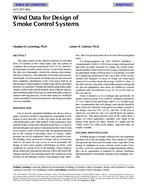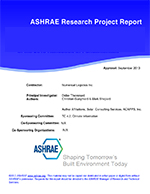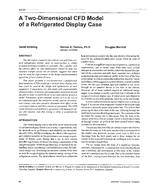A new method for characterizing ventilation in commercial buildings using the pollutant concentration index (PCI) was evaluated via field studies in four buildings. The PCI parameter quantifies the effectiveness of ventilation in controlling air pollutant exposures for pollutants released continuously and spatially uniformly within the building. For the measurements, passive tracer gas sources, spaced uniformly per unit floor area, simulated an indoor pollutant. The sources continuously released the tracer gas at a known rate. During the occupied periods of several days, air samples from seated breathing-level locations were collected in gas storage bags. The PCI values were based on the tracer gas concentrations in the sample storage bags and on the indoor tracer gas emission rate. The technique was successfully implemented in buildings ranging in floor area from 130 m2 to 4475 m 2 . Results of these studies indicated that the spacing of tracer gas sources, between 8 m 2/source and 73 m 2/source, had little effect upon measured values of the PCI. The agreement between PCI values measured simultaneously with two different tracers was usually within 15%. The precision of PCI measurements made with a single tracer gas was approximately 5%. Measured PCI values were referenced to predicted values for buildings that meet minimum ventilation standards. PCI values also indicated the spatial and temporal variability of the effectiveness of ventilation in controlling pollutant exposures.
Authors:David Faulkner, P.E., William J. Fisk, P.E., Douglas P. Sullivan, James M. Thomas, Jr.
Citation:IAQ and Energy 98: Using ASHRAE Standards 62 and 90.1 Conference Papers
Keywords:October, Louisiana, 1998
Citation: IAQ Conference: IAQ 98
Product Details
- Published:
- 1998
- File Size:
- 1 file , 170 KB
- Product Code(s):
- D-8142


